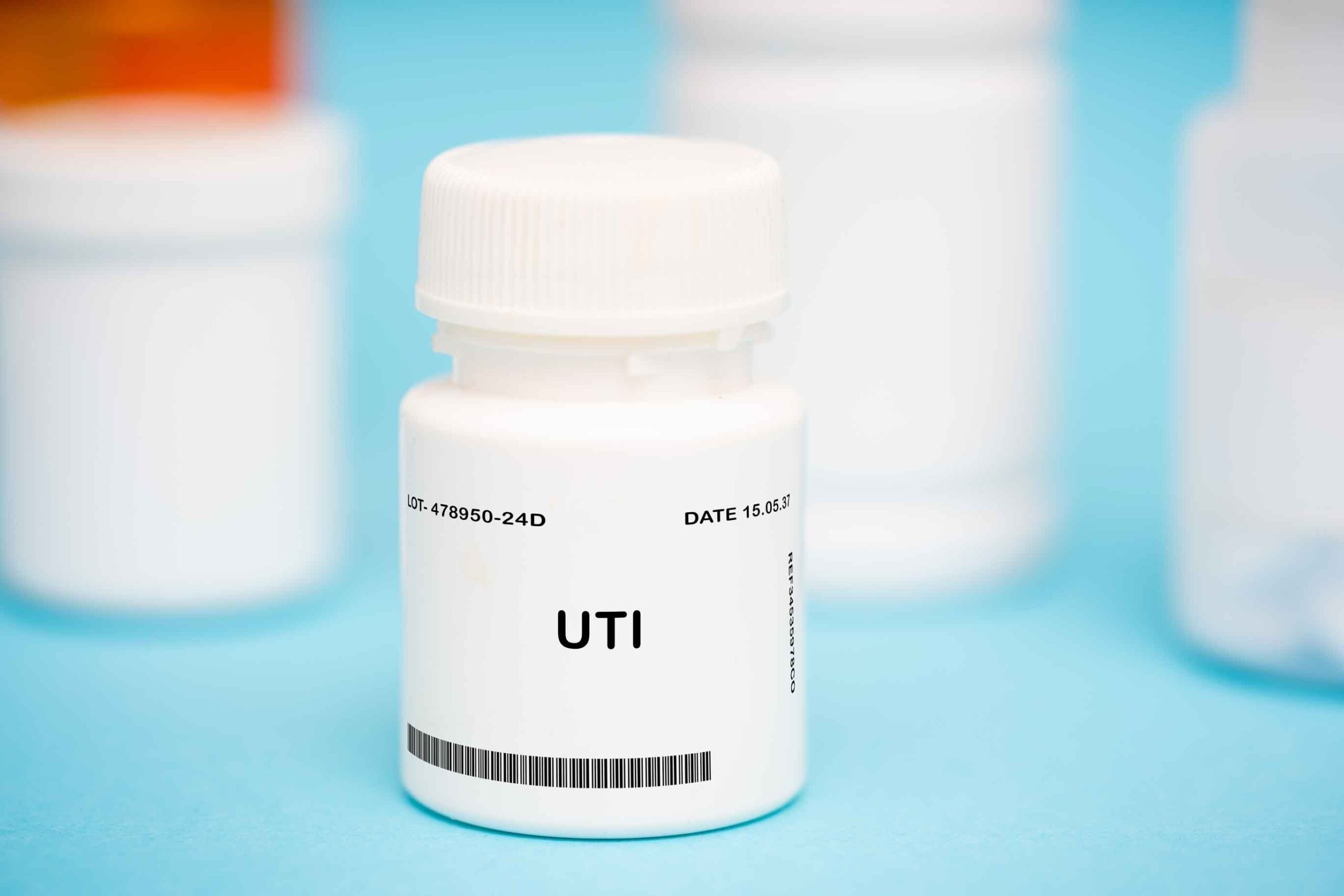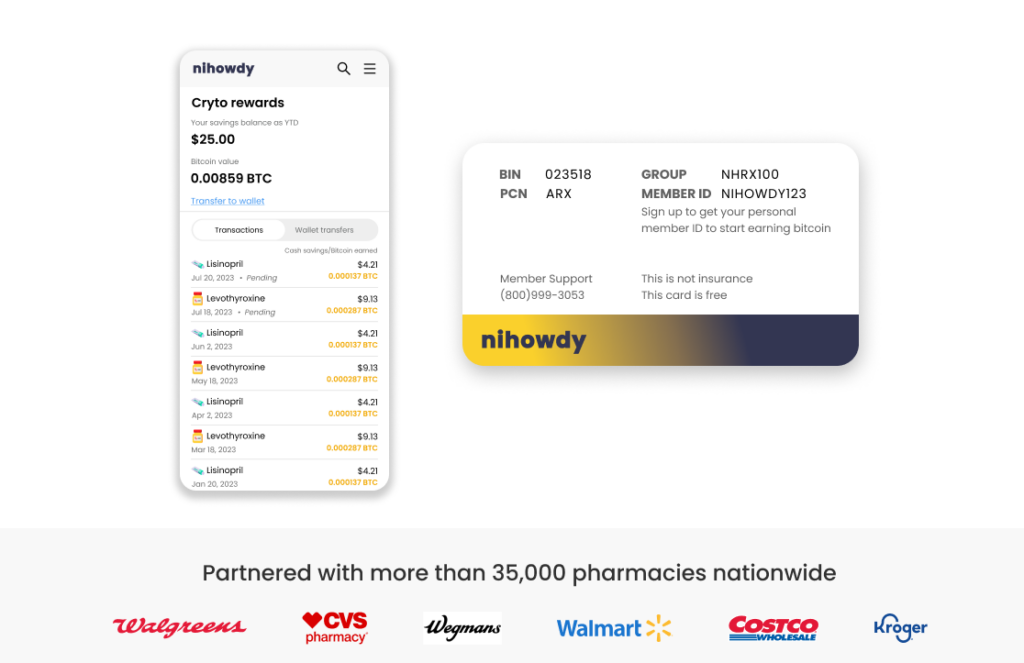Practical Strategies: How to Treat Urinary Tract Infection


Are you struggling with a urinary tract infection? Get straight to relief with this guide on how to treat urinary tract infections. From recognizing symptoms to effective medications and supportive home remedies, we’ll help you navigate your UTI with practical and clear steps — without the fluff.
Key Takeaways
Antibiotics are the primary form of treatment for UTIs, and it’s essential to complete the entire course to avoid complications and antibiotic resistance.
Prevention and management of UTIs include staying hydrated, adopting good bathroom and hygiene practices, and avoiding irritants like caffeine and alcohol.
NiHowdy’s discount card provides financial relief for UTI treatments by offering prescription discounts and additional rewards in Bitcoin.
Understanding Urinary Tract Infections (UTIs)

An infection within any component of the urinary system, including the kidneys, ureters, bladder, and the pathway through which urine travels from the bladder out of the body—the urethra—is known as a Urinary Tract Infection (UTI).
Most of these infections are caused by bacteria such as E. coli entering the urethra and predominantly affect bladder health. An essential factor to consider is that females have an increased risk for UTIs due to their shorter urethral structure.
The anatomical shape of urinary tracts can influence the likelihood of developing UTIs, as some women are genetically predisposed to infections due to these anatomical factors.
It’s imperative to dispel one common falsehood—urinary tract infections are not transmitted sexually. They should be treated with urgency. If left untreated, UTIs can escalate into more serious conditions like kidney stones or even result in infectious attacks on renal tissues.
In terms of managing UTIs medically, what options exist?
What is an Urinary Tract Infection (UTI)?
A urinary tract infection (UTI) occurs when bacteria infiltrate the urinary system, which includes the kidneys, bladder, and urethra. These infections can affect any part of the urinary tract but are most commonly found in the lower urinary tract, comprising the bladder and urethra. UTIs are a prevalent health issue, impacting millions of individuals annually and placing a significant burden on the healthcare system. Recognizing the symptoms and seeking prompt treatment is crucial to prevent complications and ensure a swift recovery.
Types of Urinary Tract Infections
Urinary tract infections (UTIs) can manifest in various forms, each affecting different parts of the urinary system:
Bladder Infections (Cystitis) occur when bacteria enter the bladder, leading to inflammation. Symptoms often include pain or burning during urination, a frequent or urgent need to urinate, and urine that appears cloudy or has a strong odor.
Kidney Infections (Pyelonephritis): When bacteria reach the kidneys, they can cause severe inflammation. Symptoms may include intense back or flank pain, nausea, vomiting, and fever. Kidney infections require immediate medical attention to prevent permanent damage.
Urethral Infections (Urethritis): These infections occur when bacteria infect the urethra, causing inflammation. Symptoms typically include pain or burning during urination, a frequent urge to urinate, and discharge from the urethra.
Understanding your UTI type is essential for effective treatment and management.
Initial Steps in Treating UTIs

We will examine the initial stages of treating urinary tract infections (UTIs), starting with recognizing symptoms and pursuing an expert medical diagnosis.
Recognizing Symptoms of a UTI
To recognize a urinary tract infection (UTI), watch for your body’s warning signs. These include the urgent need to urinate, discomfort while urinating, and urine that appears cloudy or has blood in it. This should not be dismissed as usual, even if you consume ample water. These persistent symptoms call for attention.
Other indicators, such as lower back pain and vaginal discharge, may suggest an infection within the urinary tract. It is essential to seek medical advice when encountering these symptoms to avoid severe repercussions like kidney infections, which can arise from an untreated UTI.
Seeking Professional Diagnosis
If you exhibit symptoms suggestive of a urinary tract infection (UTI), the following course of action is to obtain an official diagnosis from a healthcare professional. Wondering about the methods they use? The process commonly involves clinical laboratory equipment and, at times, advanced imaging technology.
To diagnose UTIs, medical practitioners typically:
Analyze a urine sample to detect the presence of bacteria or white blood cells, which can signal a potential infection in the urinary tract.
If more detailed internal views are needed, use diagnostic imaging techniques like CT scans or ultrasounds.
Extensive medical history assessment and physical examinations are performed, mainly when dealing with recurrent UTIs.
These steps are vital components in accurately determining if you have a UTI.
Prescription Medications: The Primary Treatment

The initial therapeutic approach for urinary tract infections (UTIs) is the administration of antibiotics. We will delve into why it’s critical to finish prescribed antibiotic courses and discuss situations that may warrant transitioning from oral medications to intravenous antibiotic treatments.
Importance of Completing Antibiotic Courses
When you take antibiotics for a UTI, think of them as troops engaged in combat with the bacteria responsible for your infection. If these “soldiers” withdraw prematurely, the surviving bacteria can regroup and mount a more robust defense, which results in a more stubborn infection to defeat. This is the risk when one doesn’t see through the complete antibiotic regimen prescribed for a UTI.
Not only does an incomplete course of antibiotics lead to recurring infections, but it also fosters conditions where antibiotic resistance develops. Consequently, subsequent infections become increasingly difficult to fight off with standard treatments. Thus, even if symptoms dissipate within days after beginning treatment for a UTI, ensuring that all prescribed antibiotics are consumed is essential in obliterating bacterial growth and preventing the development of resistant strains of bacteria.
When IV Antibiotics Are Necessary (Kidney Infection)
Oral antibiotics are commonly sufficient for the treatment of UTIs. More serious conditions like complicated UTIs might necessitate a more robust approach. Severe UTIs or kidney infections often require the administration of intravenous antibiotics.
Should a UTI prove to be antibiotic-resistant or if it extends into the kidneys, intravenous treatment at a hospital becomes necessary. This type of antibiotic therapy is usually conducted in a medical care facility to ensure proper management and monitoring of the infection.
Home Remedies and Lifestyle Adjustments

Besides therapeutic approaches, managing and preventing UTIs can also be supported by home remedies and lifestyle changes, such as adequate fluid intake and dietary choices, and the longstanding discussion regarding the effectiveness of cranberry juice.
Hydration and Diet
Proper hydration is essential for preventing urinary tract infections (UTIs), as it helps flush out bacteria from the urinary tract. Drinking an adequate quantity of water encourages regular urination, which in turn aids in removing bacteria that may increase the risk of developing a UTI.
Being mindful of your dietary intake and ensuring you are well-hydrated are equally vital. To prevent worsening bladder irritation and amplifying the symptoms of a UTI, professionals suggest steering clear of known irritants like alcoholic beverages, caffeine drinks, coffee, and products containing citrus juices.
Cranberry Juice: Myth or Fact?
Let’s tackle the big question – does drinking cranberry juice truly aid in preventing urinary tract infections (UTIs)? The truth is, it’s a bit complex.
Drinking cranberry juice provides certain compounds that have the potential to hinder bacteria from adhering to the walls of the bladder, thereby diminishing the chance of contracting UTIs. Yet these advantageous substances are more prevalent in concentrated forms found in cranberry extract supplements and pure cranberry drinks than your typical bottled cranberry beverage offerings.
Although commonly considered beneficial for thwarting and managing UTIs, this notion demands scrutiny against comprehensive scientific research attesting to its effectiveness.
Managing Pain and Discomfort
UTIs often bring a great deal of discomfort, but pain and unease can be alleviated. Analgesics available without a prescription, such as phenazopyridine, are effective for easing the pain, itching, burning sensation, and frequent urge to urinate commonly experienced during UTI flare-ups.
To alleviate physical discomfort when faced with a bladder infection, using a hot water bottle or heating pad on the lower abdomen can reduce feelings of pressure or bladder-related distress. It’s also beneficial to steer clear of substances that could irritate the bladder, including alcohol, caffeine drinks like coffee and soda, artificial sweeteners, and spicy foods—avoiding these may lessen UTI symptoms.
Complications of Urinary Tract Infections
If left untreated, urinary tract infections (UTIs) can lead to serious health complications:
Kidney Damage: Untreated kidney infections can cause permanent damage to the kidneys, potentially leading to chronic kidney disease or kidney failure.
Sepsis: In rare cases, a UTI can escalate to sepsis, a life-threatening condition where the body’s response to infection causes widespread inflammation and organ failure.
Bloodstream Infections: UTIs can also result in severe bloodstream infections that can be fatal if not promptly treated.
Prompt diagnosis and treatment of UTIs are crucial to prevent these severe complications.
Special Populations
Certain groups are at a higher risk of developing urinary tract infections (UTIs):
Women: Due to their shorter urethra and the proximity of the urethra to the anus, women are more susceptible to UTIs than men.
Pregnant Women: Pregnancy induces changes in the urinary system, increasing the risk of UTIs. Regular screening and prompt treatment are essential during pregnancy.
Older Adults: Age-related changes in the urinary system and a weakened immune system make older adults more prone to UTIs.
People with Diabetes: Diabetes can impair immune function and cause nerve damage, affecting the urinary system and increasing the risk of UTIs.
Recognizing these risk factors can help take preventive measures and seek timely medical care.
Preventing Future UTIs

We will delve into long-term strategies, behavioral modifications, and medical treatment as crucial components in averting subsequent urinary tract infections (UTIs). These preventive tactics will be explored thoroughly.
Behavioral Changes
Maintaining good hygiene practices is essential in warding off urinary tract infections (UTIs). Ensuring that one wipe from front to back following urination and bowel movements can thwart the transfer of bacteria toward the urethra. Thorough cleansing of the genital region both before and after engaging in sexual intercourse could also serve as a deterrent for bacterial invasion into the urinary tract.
The selection of personal care items applied to your body should be made with caution, steering clear of products known to agitate the urethra, including:
perfumed toilet tissue
spermicidal agents
vaginal douches
aerosol deodorant sprays
It’s recommended that proactive measures be taken to reduce associated risk factors and diminish the incidence of UTIs.
Long-Term Strategies
Individuals who frequently suffer from recurrent UTIs may need to consider long-term preventative measures. Decreased estrogen levels in postmenopausal women can lead to vaginal atrophy, heightening the risk of UTIs. This condition can be managed through the use of estrogen-containing vaginal creams.
Individuals grappling with chronic urinary tract infections might find relief through nonantibiotic alternatives such as methenamine hippurate. Probiotics are another avenue that could help by re-establishing a healthy balance of bacteria within the gut, which is especially helpful in mitigating recurring UTI risks following antibiotic treatments.
NiHowdy’s Discount Card: Aiding Your UTI Treatment Journey
Addressing the management of UTIs involves medical, lifestyle, and financial considerations. NiHowdy’s prescription discount card can play a pivotal role by providing discounts on prescriptions and rewarding users with up to 3% back in Bitcoin for every purchase they make.
Registering for NiHowdy’s discount program is straightforward, simplifying access to its advantages.
It facilitates locating pharmacies nationwide that participate in their network.
Allows users to compare drug prices, ensuring optimal savings are achieved effortlessly.
The Bitcoin rewards feature holds potential for value growth, presenting an opportunity for long-term fiscal benefits that may help ease healthcare-related financial stress over time.
Summary
In this journey through the world of UTIs, we’ve learned that these common infections can be managed effectively with prompt diagnosis, appropriate medical treatment, and lifestyle adjustments. You can prevent and manage UTIs by understanding the symptoms, seeking timely medical help, sticking to prescribed treatments, and making necessary behavioral changes. Remember, staying hydrated, practicing good hygiene, and using resources like NiHowdy’s discount card can make your UTI treatment journey more accessible and affordable.
Frequently Asked Questions
Are UTIs sexually transmitted infections?
UTIs, or urinary tract infections, are not considered sexually transmitted infections. Typically, they occur when bacteria make their way into the urinary tract.
How are UTIs diagnosed?
Healthcare providers determine the presence and severity of UTIs by examining urine samples and, when necessary, employing imaging tests such as ultrasounds or CT scans.
What is the primary treatment for UTIs?
The primary approach to treating UTIs is utilizing antibiotics, and the specific type depends on the infection’s nature and seriousness. Seeking advice from a healthcare expert for an accurate prescription is crucial.
Can cranberry juice prevent UTIs?
To prevent UTIs, it is advisable to opt for cranberry extract supplements or concentrated forms of cranberry juice. These products contain beneficial compounds that could hinder bacteria from adhering to the bladder walls.
Ordinary cranberry juice drinks might not have the same potency in preventing urinary tract infections.
What are some long-term strategies to prevent recurrent UTIs?
For postmenopausal women aiming to mitigate the long-term risk of recurrent UTIs, employing estrogen in the form of a vaginal cream, alongside methenamine hippurate and probiotics, can be a practical preventative approach.
Implementing these methods may decrease the likelihood of experiencing urinary tract infections as time progresses.
How soon after treatment will I feel better?
Most individuals feel relief from UTI symptoms within a few days of starting antibiotic treatment. Antibiotics are the primary treatment for UTIs, effectively targeting and eliminating the bacteria causing the infection. However, it is crucial to complete the entire course of antibiotics, even if symptoms improve, to ensure the infection is entirely eradicated and to prevent the development of antibiotic-resistant bacteria. Adhering to the prescribed treatment plan is key to a full recovery and reducing the risk of recurrent infections.


